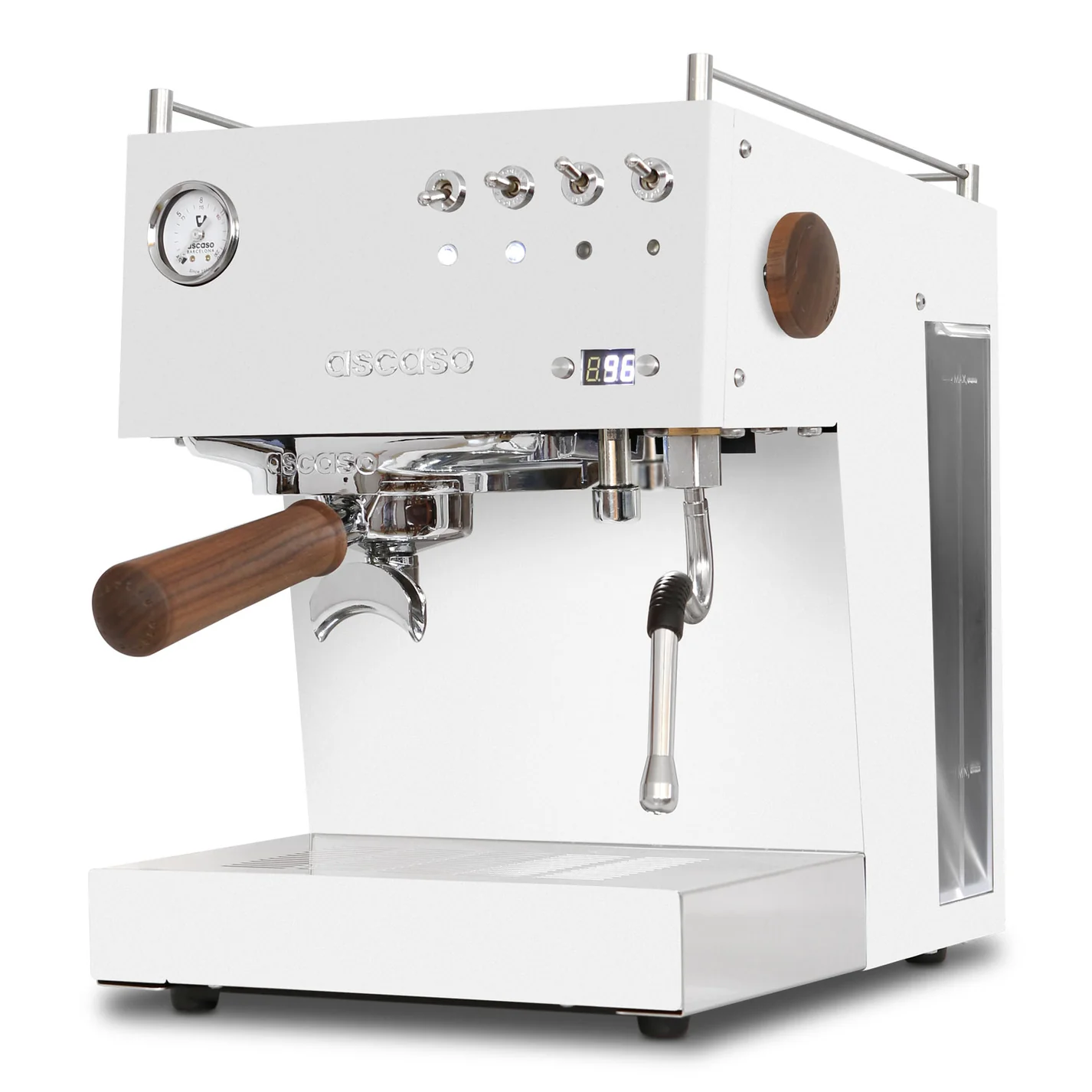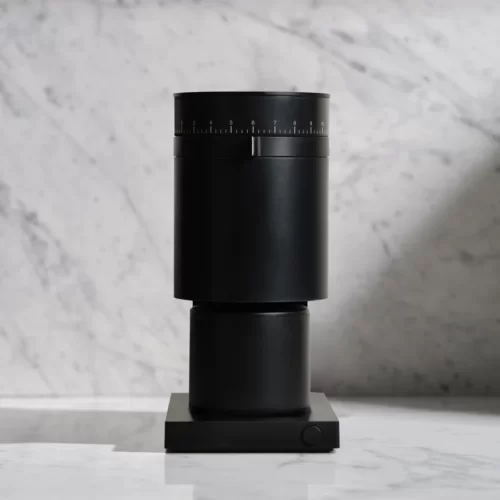9 Or 15 Bars Of Pressure For Espresso? | Pull A Perfect Shot

Heads up: This content is reader-supported, meaning we may earn a small commission if you click on some of our links.
If you find espresso to be a bit mysterious, you’re not alone. Pulling a perfect shot of espresso sometimes feels like a feat of chance and divine intervention.
But they say knowing is half the battle, so here we’ll break down bars of pressure and how many bars for good espresso and get you on your way to becoming a master barista.
Or, at least, you’ll understand what the heck bars of pressure for espresso mean and can drop knowledge on your friends at parties.
So let’s get to it.
Table of Contents
Bars Of Pressure For Espresso

What Do Bars Mean On Espresso Machines?
So, what are bars of pressure, anyway? Bars are metric units of measurement. They measure the pressure level as PSI does; it’s just a different unit of measurement.
In the same way that miles and kilometers measure distance, bars and PSI measure pressure.
What pressure are we talking about? Atmospheric pressure. One bar is equal to the atmospheric pressure at sea level.
So, what do bars mean on espresso machines? Is there a noticeable difference between 15 bar vs 20 bar espresso?
Regarding bars of pressure for espresso, a 9-bar espresso machine pushes water through the ground coffee at nine times the natural pressure of the atmosphere.

How Many Bars Of Pressure Should An Espresso Machine Have?
So, what bar pressure is best for espresso? Anything less than 9 bars won’t produce an authentic espresso with crema.
Nine bars are the ideal pressure for espresso, but you’ll notice that several espresso machine manufacturers advertise 15 or more bars of pressure.
So what does 15 bar espresso mean? Is 15 bars of pressure good for espresso?
Yes and no. Machines that advertise 15, 18, or even 20 bars of pressure for espresso typically feature an internal restricting valve that prevents the machine from brewing at a level higher than 9 bars.
So, why advertise 15 bar vs 9 bar espresso machines? A cheap marketing ploy aimed at fooling consumers into falling for the “more is better” trap.
What does 20 bar espresso mean? Nothing really. There is typically an internal restricting valve inside the 20 bar or 15 bar espresso machine, meaning these machines only use 9 available bars to brew.
The number of bars of pressure for espresso does not determine the quality of the espresso or machine. More bars do not mean higher quality. 9 bars is the best bar pressure for espresso.

Can You Make Espresso With A French Press?
Here’s the deal: You can brew an espresso roast using a French press or other coffee makers, but it won’t produce a proper espresso.
You’ll need those 9 bars of pressure for espresso with crema, the beautiful creamy top layer of the espresso shot we covet. Brewing espresso roast with another coffee maker will be a dark cup of coffee.
Some alternative brewing methods also use pressure, but they won’t get you anywhere near the necessary bars of pressure for espresso.
You can make espresso on the stove using a Moka pot, which uses pressure in the form of steam. It’ll get you about as close as possible to the real thing, but it’s still technically a robust, concentrated cup of coffee.
Many like to make espresso with Aeropress, but while it’ll produce a similarly concentrated brew to the Moka pot, it can’t rival the pressure of an espresso machine either. Another tiny cup of what is technically considered coffee.

Selecting An Espresso Machine
So now that we’ve determined a machine is necessary to reach 9 bars of pressure for espresso, what should you look for when shopping for one?
Now that you know what bar pressure is best for espresso, is there any difference between a 15 bar vs 9 bar espresso machine? Or 15 bar vs 20-bar espresso machines? No, but not all espresso machines are created equally.
There are several factors to consider when choosing an espresso machine. Let’s look at a few to get you started.

Material
Unfortunately, while high-end and commercial espresso machines are made of stainless steel, many espresso machines for home use are made of plastic.
Look for those built well with sturdy construction and solid parts. Espresso machines backed by a warranty are a good bet, indicating that the manufacturer stands by their product.
Most reasonably priced home espresso machines feature at least some plastic but should hold up well for the average homebrewer.

Ease of use
Consider how much work you will put into your morning shot of espresso. Some machines offer features that simplify the brewing process, while others will ask more of you.
You can choose between manual and semi-automatic espresso machines or a fully automatic espresso machine (one that literally takes ALL the work out of it), but those usually come with a much higher price tag.
The manual espresso machines will require the most practice and elbow grease (literally) but are relatively easy to use once you get the hang of it.
But what is the difference between a manual and a semi-automatic espresso machine?

Manual Espresso Machine Vs. Semi-Automatic
A manual espresso machine is just what it sounds like. It gives the brewer all of the control over pulling a perfect shot of espresso.
To make espresso with a manual espresso machine, you pump a lever to achieve the bars of pressure needed to brew the espresso. If breaking a sweat first thing in the morning isn’t your idea of a good time, a semi-automatic espresso machine might be for you.
A semi-automatic espresso machine allows you to retain some control over the brewing process but takes the actual grunt work out of it. Many of these machines have features like milk steaming and temperature control but still allow you to grind and tamp the beans yourself.
And yes, you should always grind coffee beans yourself.

Pre-Ground Espresso
There are many reasons to avoid pre-ground coffee beans, but for the purposes of brewing espresso, here are the top three:
- The grind size of pre-ground coffee is too coarse for espresso
- Pre-ground coffee becomes stale much faster
- Buying pre-ground coffee limits the brewer to only 1 or 2 brewing methods
If you don’t already have one, you definitely want to pick up a burr grinder (either manual or electric).
This is a vital step toward achieving the perfect shot of espresso.
Is Espresso Better Than Coffee?
We think each has attributes worth enjoying, so why limit yourself? Brewing with the optimal bars of pressure for espresso results in a rich, creamy, flavorful shot. The sky’s the limit on where you can take it from there.
Maybe you master the iced latte? Or steam some milk for a rich, indulgent cappuccino. These are just two of our favorites around here.
But we’re huge fans of other brewing methods as well. We’re partial to slow brewing and enjoy making Japanese iced coffee on summer mornings or prepping a batch of cold brew for the week using our French press.

Closing Thoughts
Now that you’ve learned more about bars of pressure for espresso, you can understand why authentic espresso only comes from an espresso machine.
And you know there is likely not much difference between 9-bar and 15-bar espresso machines for home use.
But don’t let that stop you from experimenting with other brewing techniques. We are huge fans of the Moka pot and Aeropress and thoroughly enjoy the highly concentrated coffee they produce.
Plus, you can’t exactly take your espresso machine on vacation with you, so the Aeropress and Moka pot definitely have a place in your coffee arsenal.
Cheers!
ABOUT THE AUTHOR
Heather Calatrello
Heather is the head coffee roaster and founder of ShedLight Coffee Roasters in San Diego, CA. Her solar-powered coffee roastery was recently the subject of a BlueDot Living dispatch, and she has repeatedly been featured in Food & Wine, Real Simple, Parade, and more.

